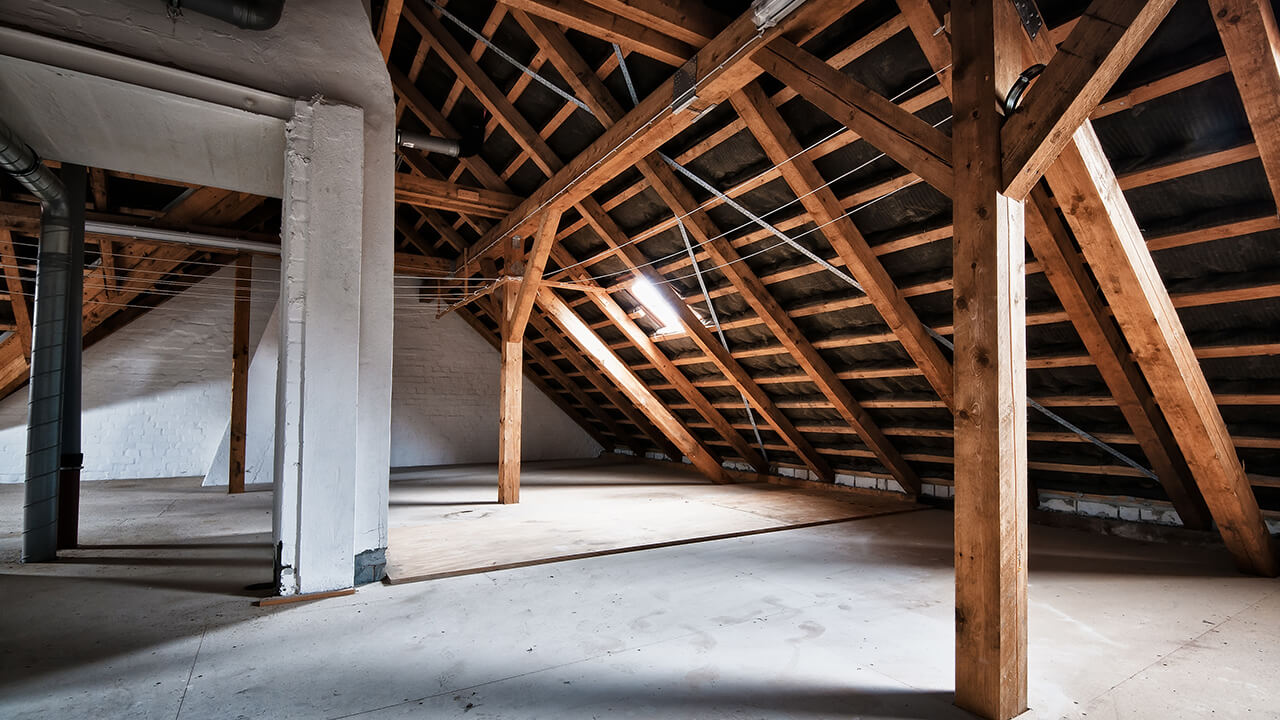How to calculate an attic area for insulation?
Calculating a usable area of an attic can cause problems. It is worth remembering that the surface for insulation is not equal to the surface of an upper storey. In order to accurately calculate its value, you need to consider the dimensions of ceilings and slants. The exact result can be obtained by measuring the entire attic. You can also use a formula that roughly determines its usable area. How to calculate square meters of slants? Assume that there is 1.4 m2 for insulation of a roof surface for every m2 of an upper area. Detailed information on how to calculate a usable area of an attic can be found in the construction standards.
If you do not plan to create a usable area under a roof, the calculations are less complicated. How to count slants on a non-utility attic? You do not need to know their dimensions. In addition, you can carry out thermal insulation only on an upper storey. Then the value of the surface to be insulated is equal to the surface of a ceiling.
Thickness of the attic insulation
In the case of thermal insulation of an attic, the thickness of the insulation layer is crucial, especially if a room is to be usable. Thermal insulation takes up a bit of space, reducing its volume.
The thickness of the attic insulation depends on the value of heat transfer coefficient U. Its value is currently 0.18 W/(m2K), therefore the thickness of the open-cell PUR foam layer, e.g. Purios E, which should be covered with attic, is at least 21 cm. The lower the heat transfer coefficient you want to achieve is, the thicker the foam layer should be applied. To achieve the U-value for the closed-cell foam, e.g. Purios H, the optimum foam thickness is only 12 cm, which in the case of functional attics is of great importance.
If you expect a higher level of insulation, you can apply a thicker layer of up to 24 cm. Such thickness of PUR foam will increase the level of insulation, which will have an additional saving in the case of space heating, and as a consequence – for your finances.
Which PUR foam should you choose to insulate an attic? There is no unambiguous answer - both types are perfect for thermal insulation. The open-cell PUR foam, e.g. Purios E, is a lightweight material with excellent thermal properties. In addition, it is perfect as an acoustic isolator. In turn, the closed-cell foam, e.g. Purios H, is distinguished by a low heat transfer coefficient. It is rigid, resistant to mechanical damage and does not absorb moisture, which results from high diffusion resistance and the structure of closed cells. The open-cell foam is recommended for wooden attics, and the closed-cell foam - for attics made of concrete.
If calculating the initial cost of the attic insulation is difficult for you, you can use the form of the attic thermal insulation calculator. This tool will help you determine the amount that you will probably have to spend on the thermal insulation of a roof.
You can use the attic insulation calculator if you have already determined the size of a roof surface to be insulated, you know what material you want to use, and you know the requirements for the insulation thickness. Check whether you plan to carry out roof insulation with a wooden ceiling and diagonal attic floor, or insulating a ceiling over a storey. The next step involves the determination of the amount for the work considering the type of a surface to be insulated.
Attic insulation calculator - set the performance costs
If calculating the initial cost of the attic insulation is difficult for you, you can use the form of the attic thermal insulation calculator. This tool will help you determine the amount that you will probably have to spend on the thermal insulation of a roof.
Attic insulation calculator - set the performance costs

You can use the attic insulation calculator if you have already determined the size of a roof surface to be insulated, you know what material you want to use, and you know the requirements for the insulation thickness. Check whether you plan to carry out roof insulation with a wooden ceiling and diagonal attic floor, or insulating a ceiling over a storey. The next step involves the determination of the amount for the work considering the type of a surface to be insulated.

 This website uses cookies. By using this website, you consent to the use of cookies in accordance with your browser settings.
This website uses cookies. By using this website, you consent to the use of cookies in accordance with your browser settings.